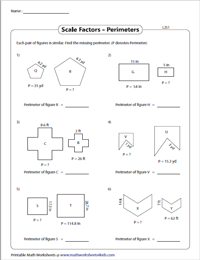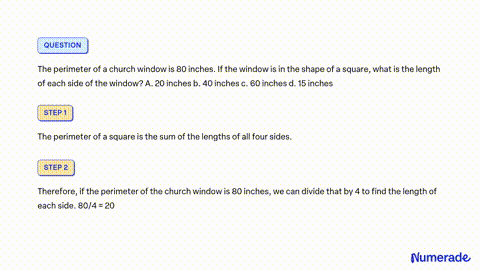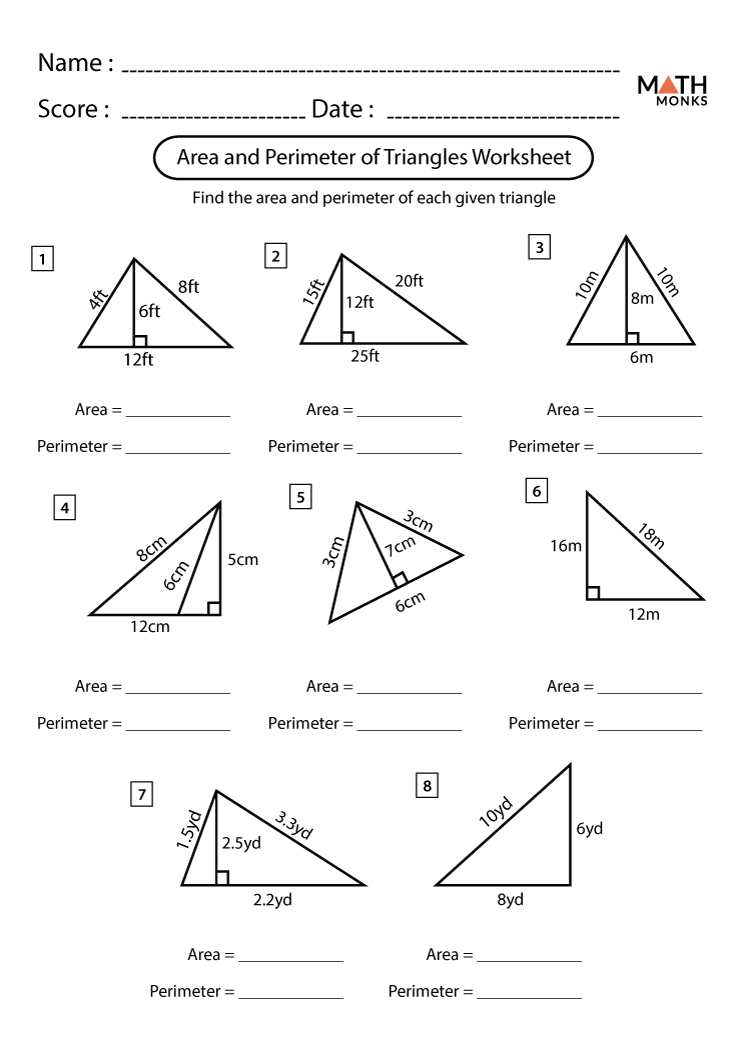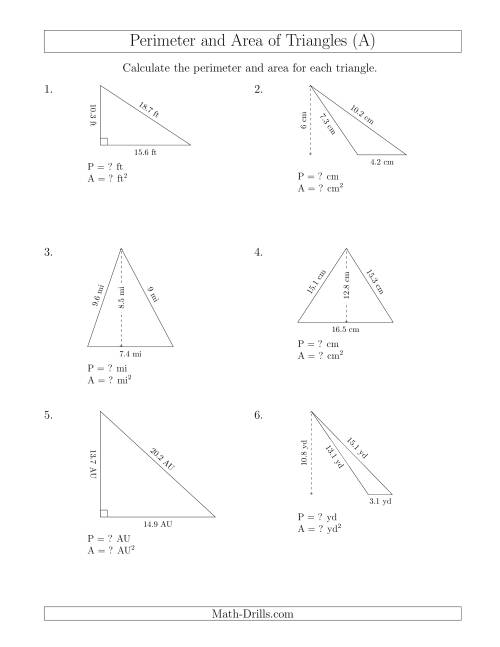Topic perimeters and areas of similar figures practice: Embark on a mathematical journey with "Perimeters and Areas of Similar Figures Practice", where engaging strategies transform learning into an exciting exploration of geometry"s fundamental concepts.
Table of Content
- How can I practice finding the perimeters and areas of similar figures?
- Understanding Scale Factors and Ratios in Similar Figures
- The Relationship Between Perimeters and Areas in Similar Polygons
- YOUTUBE: Perimeters and Areas of Similar Figures
- Interactive Learning: Manipulating Similar Figures
- Theorems and Formulas for Perimeters and Areas of Similar Figures
- Practical Applications: Solving Problems on Similar Polygons
- Worksheets and Exercises for Practice
How can I practice finding the perimeters and areas of similar figures?
To practice finding the perimeters and areas of similar figures, you can follow these steps:
- Understand the concept: Familiarize yourself with the concept of similar figures. Similar figures have the same shape but can be of different sizes.
- Identify corresponding sides: For two similar figures, determine which sides are corresponding to each other. These sides will have the same ratios.
- Find the ratio: Calculate the ratio of the corresponding side lengths of the two figures.
- Calculate the scale factor: The scale factor is the ratio of the lengths of corresponding sides. It can be found by dividing the length of one corresponding side by the length of the other corresponding side.
- Find the perimeter: To find the perimeter of a similar figure, multiply the length of each side by the scale factor and then add up the results.
- Find the area: To find the area of a similar figure, square the scale factor and then multiply it by the area of the original figure.
By practicing these steps, you will gain a better understanding of how to find the perimeters and areas of similar figures.
READ MORE:
Understanding Scale Factors and Ratios in Similar Figures
Understanding scale factors and ratios is crucial in grasping the concepts of perimeters and areas of similar figures. Similar figures are shapes that have the same form but may differ in size. The scale factor plays a pivotal role in determining how the dimensions of similar figures relate to each other.
When discussing similar polygons, the first point to note is that the ratio of their corresponding sides is equal to the scale factor. For example, if two similar triangles have side lengths in the ratio 1:2, the scale factor is 2.
Perimeters of Similar Figures
The ratio of the perimeters of similar figures is directly proportional to the scale factor. This means that if you multiply the side lengths of a figure by a certain scale factor, its perimeter will also increase by the same scale factor. For instance, if a square with a side length of 2 units is scaled by a factor of 3, its perimeter will increase from 8 units to 24 units.
Areas of Similar Figures
The relationship between the areas of similar figures is slightly different. The ratio of their areas is equal to the square of the scale factor. If the scale factor between two similar polygons is 3, then the ratio of their areas is (3^2) or 9. This squared relationship is due to the two-dimensional nature of area.
Practical Applications
This understanding is not just theoretical; it has practical applications in various fields like architecture, art, and geometry. It helps in resizing designs while maintaining their proportionality and can be applied in problems involving maps and models.
Summary
- Scale factor is key in understanding the relationship between similar figures.
- The ratio of the perimeters of similar figures equals the scale factor.
- The ratio of the areas of similar figures equals the square of the scale factor.
- These concepts have practical applications in real-world scenarios.
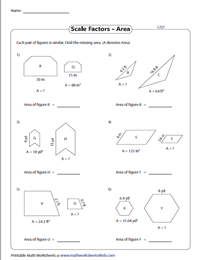
The Relationship Between Perimeters and Areas in Similar Polygons
The study of perimeters and areas in similar polygons reveals fascinating relationships governed by scale factors. Similar polygons are those with corresponding angles that are equal and corresponding sides that are proportional.
A key concept in understanding similar polygons is the scale factor, which directly influences both the perimeter and area of these shapes. The scale factor is essentially the ratio at which the sides of a polygon are increased or decreased while maintaining the shape\"s similarity.
Perimeter Relationship
The perimeter of a polygon is the total distance around its boundary. For similar polygons, the ratio of their perimeters is equal to their scale factor. This means if you know the scale factor and the perimeter of one polygon, you can easily find the perimeter of the similar polygon. For example, if the scale factor is 3 and the perimeter of the smaller polygon is 10 units, the perimeter of the larger polygon will be 30 units.
Area Relationship
Unlike the linear relationship of perimeters, the areas of similar polygons have a quadratic relationship with the scale factor. The ratio of the areas of two similar polygons is equal to the square of the scale factor. So, if the scale factor between two similar polygons is 4, the ratio of their areas is (4^2) or 16. This is because area is a two-dimensional property, and scaling affects both dimensions.
Practical Examples
Understanding these relationships can be crucial in fields like geometry, architecture, and design. For example, if an architect knows the scale factor between two similar floor plans, they can quickly determine the difference in their total area and perimeter, aiding in efficient planning and resource allocation.
Summary
- The ratio of the perimeters of similar polygons is equal to the scale factor.
- The ratio of the areas of similar polygons is the square of the scale factor.
- These concepts have real-world applications in various fields.

Perimeters and Areas of Similar Figures
Want to improve your skills? Watch this video on practice techniques to enhance your abilities in any field. Learn how to become a pro through consistent and dedicated practice!
Similar Triangles
The concept of similar triangles may seem daunting, but fear not! This video simplifies the topic, making it easy to understand. Discover the secrets of similar triangles and unlock a new level of geometry proficiency.
Interactive Learning: Manipulating Similar Figures
Interactive learning plays a significant role in understanding the concepts of perimeters and areas of similar figures. Through various interactive tools and activities, learners can manipulate similar figures to see firsthand how changing the scale factor affects their perimeters and areas.
Interactive Worksheets and Activities
Worksheets and activities that focus on the scale factor\"s impact on perimeters and areas provide a hands-on approach to learning. These resources allow learners to explore the relationship between scale factors and ratios, enhancing their understanding through practical application. For example, learners can use worksheets that require them to complete tables by determining ratios and perimeters based on a given scale factor.
Online Gizmos and Tools
Digital tools, such as online gizmos, offer an engaging way for students to explore the properties of similar figures. By manipulating two similar figures and varying their scale factor, learners can observe the changes in perimeters and areas. These interactive experiences reinforce the concepts being taught and provide a visual representation of the mathematical principles in action.
Exploration and Discovery
Interactive learning encourages exploration and discovery, allowing students to experiment with different scenarios. This method of learning can lead to a deeper understanding of how scale factors influence the perimeters and areas of similar figures, making abstract concepts more concrete and accessible.
Conclusion
- Interactive worksheets and activities offer hands-on learning experiences.
- Online gizmos and tools provide dynamic visualizations of scale factor effects.
- Interactive learning supports exploration, discovery, and a deeper understanding of geometric concepts.

Theorems and Formulas for Perimeters and Areas of Similar Figures
The study of perimeters and areas in similar figures is grounded in fundamental theorems and formulas. These principles are key to understanding how dimensions in similar polygons relate to each other when scaled.
Key Theorems
- Perimeter Ratio Theorem: The ratio of the perimeters of two similar polygons equals the scale factor. This means if one figure is scaled up or down, its perimeter changes by the same factor.
- Area Ratio Theorem: The ratio of the areas of two similar polygons is equal to the square of their scale factor. This is because area is a two-dimensional measurement and scaling affects both dimensions.
Applying the Formulas
When dealing with similar polygons, these theorems can be applied to calculate unknown dimensions. For instance, if you know the scale factor and the perimeter or area of one polygon, you can find the corresponding measurements of the similar polygon using these principles.
Examples
- Given two similar triangles, if the sides of the first triangle are scaled by a factor of 5, the perimeter of the new triangle will be 5 times the perimeter of the original.
- For polygons scaled by a factor of 3, the new polygon\"s area will be 9 times (3 squared) the area of the original polygon.
Conclusion
Understanding these theorems and formulas is essential for solving problems related to the perimeters and areas of similar figures, providing a foundation for further exploration in geometry.
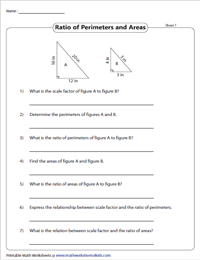
_HOOK_
Practical Applications: Solving Problems on Similar Polygons
Applying knowledge of perimeters and areas of similar figures is vital in solving real-world problems. This section provides examples of how to use the concepts of scale factors and ratios in practical scenarios involving similar polygons.
Problem-Solving Strategies
- Identifying Scale Factors: Determine the scale factor between similar figures to relate their perimeters and areas. For example, if the scale factor is known, use it to find the ratio of the perimeters or areas.
- Calculating Perimeters: Use the scale factor to calculate the perimeter of the similar figure. The ratio of the perimeters of similar figures is equal to the scale factor.
- Calculating Areas: To find the area of a similar figure, use the square of the scale factor. The ratio of the areas of similar figures is equal to the square of the scale factor.
Example Problems
- If the sides of two similar rectangles are in the ratio 2:3, and the smaller rectangle has an area of 160 units², find the area of the larger rectangle.
- Given two similar rhombi with a side length ratio of 3:5, determine the ratio of their areas.
- For two similar trapezoids where the scale factor is 3/4 and the area of the smaller trapezoid is 81 cm², calculate the area of the larger trapezoid.
These examples illustrate the practical application of theorems and formulas for perimeters and areas in similar polygons. By understanding these concepts, one can solve a variety of problems in geometry and related fields.

READ MORE:
Worksheets and Exercises for Practice
For students and educators seeking practical exercises on perimeters and areas of similar figures, a variety of worksheets and exercises are available. These resources are designed to enhance understanding and proficiency in working with similar polygons.
Types of Worksheets Available
- Worksheets focusing on the relationship between scale factors and ratios in similar figures.
- Exercises that involve finding the area and perimeter using provided scale factors.
- Practical problem-solving worksheets dealing with real-world applications.
Learning Outcomes
These worksheets are tailored to help learners understand the principles of geometry involving similar figures. They include step-by-step solutions to sample problems, ranging from simple to more complex ones, along with ample practice problems.
Target Audience
The worksheets are suitable for a range of educational levels, including 7th grade, 8th grade, and high school. They require a basic understanding of ratios, perimeters, and areas for effective learning.
Accessing the Worksheets
These worksheets can be easily accessed online, with options to print them for offline practice. They are available in both customary and metric units, catering to a diverse range of educational needs.
Dive into our comprehensive guide on perimeters and areas of similar figures to enhance your understanding and skills in geometry. These practical, interactive resources are perfect for learners at all levels seeking to master these fundamental concepts.
